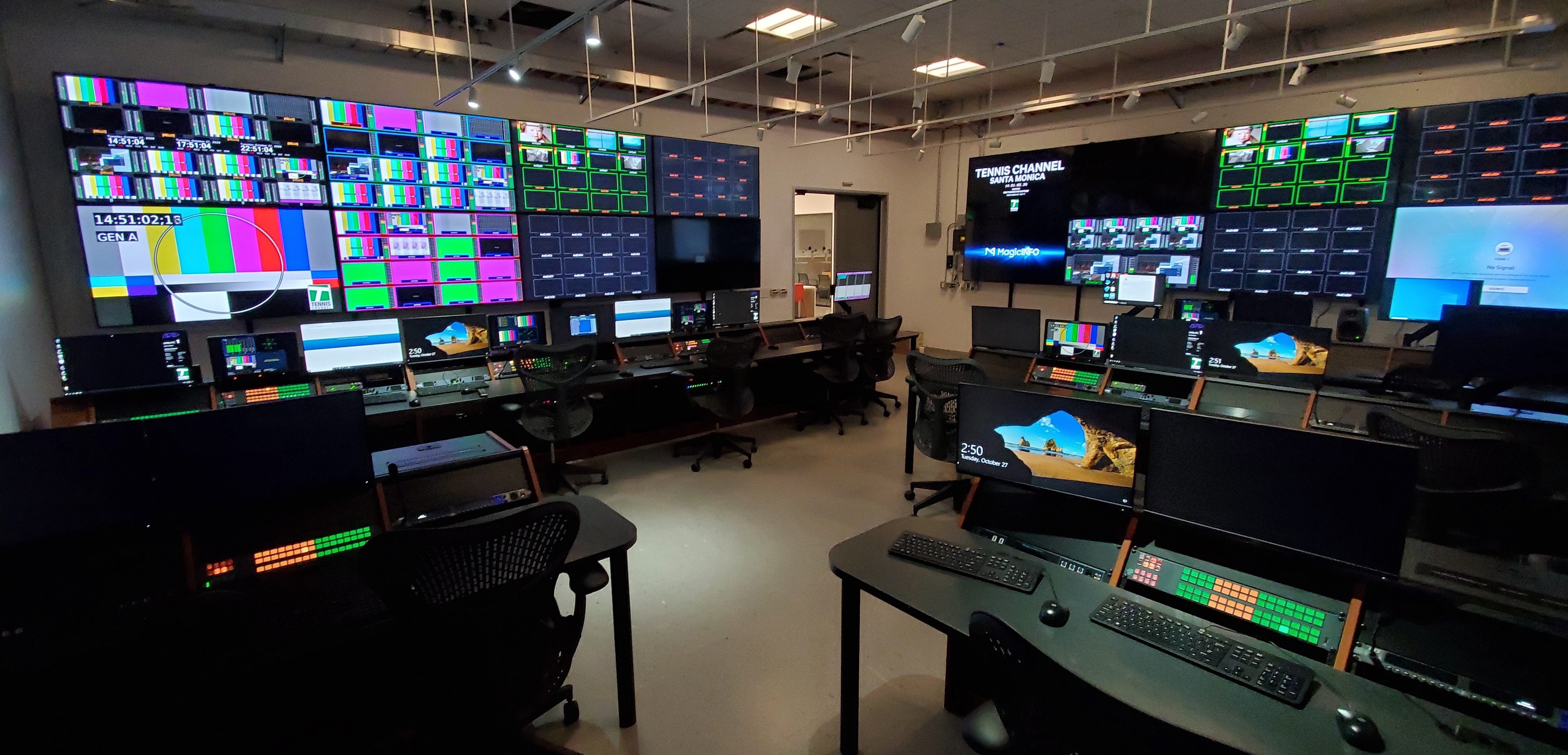Monitoring Live Events: Ensuring Flawless Broadcasts and Video Streaming
Monitoring at the contribution stage is a critical requirement for live events, especially sports streaming

In the high-stakes world of premium and sports event broadcasting, the expectation for quality viewing experiences is even higher, and the margin for error is minimal. Each live stream represents a pivotal moment where the success of the event hinges on flawless execution, presenting a technical challenge to video service providers to make sure this is achieved every time.
This is especially true at the contribution or ingest stages, where raw feeds are first encoded and transmitted using SDI, SDI over IP, or ST 2110 standards. Effectively monitoring these feeds ensures issues can be identified and resolved before they affect the viewer's experience. This is where rigorous quality assurance is a critical requirement — transforming potential pitfalls into standout successes.
The contribution stage is distinct from the later stages of production and distribution because it deals directly with the raw, original content. The effectiveness of the processes in the contribution stage plays a decisive role in maintaining the integrity and quality of the final broadcast, influencing everything from live TV broadcasts to live streamed events.
Why Monitoring at the Contribution Stage is Essential for Live Events
Monitoring video at the contribution stage is critical for several key reasons. First and foremost, it allows for the early detection of issues related to video quality, audio synchronization, and signal integrity. Catching and correcting these issues before they propagate through the distribution chain is crucial for ensuring the quality of the broadcast, especially for live events where there is no opportunity for post-production correction.
Furthermore, contribution feeds often need to adhere to strict broadcast standards and legal requirements. Monitoring helps ensure that the content meets the necessary specifications for aspect ratio, resolution, frame rate, and color space, as well as regulatory compliance for audio levels and closed captioning. In addition, identifying and resolving issues early in the broadcast chain reduces the need for costly corrections downstream or, worse, after distribution to end users. This protects broadcasters from reputation damage, and prevents a potential decline in viewership and subscribers.
New standards, technologies, and delivery platforms are also driving innovation in media streaming."
New standards, technologies, and delivery platforms are also driving innovation in media streaming. Adopting standards such as SMPTE ST 2110, which allows for the separation of video, audio, and metadata in live production, provides more flexibility and efficiency in the handling and monitoring of broadcast feeds.
Additionally, high dynamic range (HDR) content has necessitated the evolution of monitoring solutions to support higher-quality video feeds. The shift from SDI to IP-based workflows in live production has been significant too. IP offers scalability and flexibility that SDI cannot match, enabling broadcasters to manage and monitor streams more effectively over large and geographically dispersed networks.
The professional video industry's #1 source for news, trends and product and tech information. Sign up below.
Additionally, cloud-based delivery and monitoring solutions have become popular due to their scalability and the ability to remotely monitor feeds from any location. Each of these new developments plays a crucial role in modern broadcasting, and requires diligent planning and monitoring for content readiness and delivery.
Guidelines and Steps for Monitoring Live Events at the Contribution Stage
Production and broadcast centers are the central points where the encoded streams are received from an event location, such as a sports venue or concert hall. This transmission often relies on high-quality, low-latency links because any delay or loss of data can degrade the live viewing experience.
Initial Setup and Requirements Definition
The monitoring process begins by establishing the core requirements critical to the success of live streaming. This includes ensuring high reliability and quality of the stream to prevent degradation under varying network conditions. Low latency is crucial for real-time broadcasts, especially during live events, to avoid delays. Modern viewers have little patience for delays and expect real-time action, particularly when engaging with social media during sports events.
During this stage, security measures are put in place to protect the stream from unauthorized access and maintain content integrity. Today, multi-platform streaming is standard, with content being broadcast simultaneously on various live streaming and video hosting platforms worldwide. Assuring compliance with regional and platform-specific broadcast standards is also critical.
System Configuration
Next, the monitoring probe and its management interface are integrated into the streaming infrastructure (e.g., a virtual private cloud (VPC), which is configured to monitor feeds that utilize JPEG-XS, SRT and RIST protocols for error recovery and security enhancement. These protocols are applied to contribution encoders and monitoring systems to synchronize operations, enhancing both security and latency.
The network settings are optimized for live streaming, including firewall configurations, bandwidth provisioning, and the establishment of failover mechanisms to ensure uninterrupted service. Monitoring for signal strength is important as weak signals can lead to pixelation, dropped frames, and an overall poor viewing experience.
Operational Monitoring
Once the system is live, the monitoring dashboard is used for real-time monitoring, providing insights into bitrates, packet loss, latency, and overall stream health. Continuous monitoring of the video and audio feeds for clarity, stability, and synchronization is key. This involves checking the resolution, frame rate, and bitrate against predetermined standards to ensure they meet the broadcast quality requirements.
Broadcasters can set up alerts to notify the technical team of any anomalies or security breaches, allowing for immediate response. In addition, they can conduct continuous compliance and quality checks to adjust settings and ensure the stream adheres to set standards.
If the infrastructure involves the new ST2110 standard, broadcasters should continuously check the stream presence, availability, and Precision Time Protocol (PTP) to monitor for correct timing across all media flows, ensuring that all elements play back in sync. In addition, it is equally important to monitor the network bandwidth and throughput to ensure the network can handle the high bandwidth requirements of uncompressed video and audio streams typical in ST 2110 workflows.
Network congestion can lead to packet loss or increased latency. Since ancillary data such as subtitles and metadata are sent as separate flows in ST 2110, monitoring their integrity and synchronization with the main audio/video streams is essential.
Error Management and Optimization
With a centralized dashboard that consolidates data from every point in the workflow, broadcasters can monitor video quality network-wide in real-time. If issues are detected, the monitoring system will help broadcasters identify and locate the error source, streamlining root cause analysis and troubleshooting.
Errors can be caused by network issues, encoding, or protocol failures. Detailed logging and reporting capabilities facilitate root cause analysis, helping to pinpoint the underlying issues affecting stream quality or security. Following these steps, broadcasters can make real-time adjustments to rectify any deviations, ensuring the stream returns to normal parameters.
Post-Event Analysis
After the event is over, the monitoring system collects the data and user feedback to evaluate the performance of the stream. This analysis helps identify any recurring issues and assesses the overall user experience, pinpointing areas of improvement.
Conclusion
Monitoring at the contribution stage is a critical requirement for live events, especially sports streaming. By implementing cloud-based monitoring solutions that support operational monitoring, error management and optimization, post-event analysis, and more, broadcasters and media companies can ensure high-quality, secure, and reliable streaming of live events. This proactive approach to quality assurance helps maintain a strong reputation in the competitive streaming market and ensures outstanding viewer satisfaction.
Anupama Anantharaman, Vice President, Product Management at Interra Systems, is a seasoned professional in the digital TV industry. Based in Silicon Valley, California, Anupama has more than two decades of experience in video compression, transmission, and OTT streaming.

